- Custom Magnets
- Standard Magnets
- Mounting Magnets
- Magnetic Assemblies
- About Us
- Knowledge
Samarium Cobalt (SmCo) magnets are a type of rare earth magnet known for their strong magnetic properties and resistance to high temperatures. These magnets comprise samarium (Sm), cobalt (Co), and other rare earth elements.
MagnetsTek can manufacture SmCo magnet which operation temperature can be 600°C.

The 1:5 samarium cobalt magnets, also known as SmCo₅, are made from a combination of rare earth metals such as samarium, cobalt, gadolinium, and praseodymium. Magnetstek Engineering supplies custom SmCo5 magnets.
The 1:5 samarium cobalt magnets offer a maximum magnetic energy range of 10-25 and can withstand temperatures up to 250℃. Meanwhile, the total magnetic energy product is lower than that of 2:17 samarium cobalt magnets. Moreover, the mechanical properties and flexibility are superior. This makes it easier to machine into complex shapes such as thin disks, squares, rings, and custom shapes.
| Grade | Remanence/Br. | Coercivity Force/HcB. | Intrinsic Coercivity/HcJ. | Maximun Energy/(BH)max | Curie Temperature | Max. Operating Temperature | Temperature Coefficient of Br α(Br) | Temperature Coefficient of Hcj β(Hcj) | ||||
|---|---|---|---|---|---|---|---|---|---|---|---|---|
| T | KGs | KA/m | KOe | KA/m | KOe | KJ/m3 | MGOe | ℃ | ℃ | %/℃ | %/℃ | |
| YX-16s | 0.79-0.84 | 7.9-8.4 | 620-660 | 7.8-8.3 | ≥1830 | ≥23 | 118-135 | 15-17 | 750 | 250 | -0.035 | -0.28 |
| YX-18s | 0.84-0.89 | 8.4-8.9 | 660-700 | 8.3-8.8 | ≥1830 | ≥23 | 135-151 | 17-19 | 750 | 250 | -0.04 | -0.28 |
| YX-20s | 0.89-0.93 | 8.9-9.3 | 684-732 | 8.6-9.2 | ≥1830 | ≥23 | 150-167 | 19-21 | 750 | 250 | -0.045 | -0.28 |
| YX-22s | 0.92-0.96 | 9.2-9.6 | 710-756 | 8.9-9.5 | ≥1830 | ≥23 | 167-183 | 21-23 | 750 | 250 | -0.045 | -0.28 |
| YX-24s | 0.96-1.00 | 9.6-10.0 | 740-788 | 9.3-9.9 | ≥1830 | ≥23 | 183-199 | 23-25 | 750 | 250 | -0.045 | -0.28 |
| LTC (YX-10) (SmGd)Co5 | 0.62-0.66 | 6.2-6.6 | 485-517 | 6.1-6.5 | ≥1830 | ≥23 | 75-88 | 9.5-11 | 750 | 300 | Temp. Range 20-100℃ 100-200℃ 200-300℃ | α(Br) +0.0156+0.0087 +0.0007 |
| The temperature coefficients of remanence Br and intrinsic coercivity Hcj are measured at 20°C to 150°C, only for reference. | ||||||||||||
| Theoretical calculation formula (T1 = room temperature (usually 20℃), T2=high temperature): | ||||||||||||
| Br@T2=Br@T1-[(T2-T1)*α(Br)*Br@T1] | ||||||||||||
| Hcj@T2=Hcj@T1-[(T2-T1)*β(Hcj)*Hcj@T1] | ||||||||||||
| Taking YX-20s,Br=0.9T, Hcj=1830KA/m as an example, the theoretical value at 150℃ is calculated as follows: | ||||||||||||
| Br@150℃=0.9-[(150-20)*0.045%*0.9]=0.8473T | ||||||||||||
| Hcj@150℃=1830-[(150-20)*0.28%*1830]=1163.88KA/m | ||||||||||||
| Sm₁Co₅ | Unit | SmCo5 Magnet |
|---|---|---|
| Density (D) | G/Cm3 | 8.3 |
| Curie Temperature (Tc) | K | 1000 |
| Vickers Hardness (Hv) | MPa | 450-500 |
| Compressive Strength (δc) | MPa | 1000 |
| Resistivity (ρ) | Ω.Cm | 5~6×10⁻⁵ |
| Bending Strength (δb) | Mpa | 150-180 |
| Tensile Strength (δt) | Mpa | 40 |
| Coeff. of Thermal Expansion (α) | (10⁻⁶/℃) | ∥ 6 |

The 2:17 samarium cobalt magnets, also known as Sm₂Co₁₇ magnets, are a high-performance magnetic material made of samarium, cobalt, copper, iron, and zirconium through melting, grinding, pressing, sintering, and aging processes. With a maximum energy product ranging from 17-35 MGOe and a high working temperature between 250℃-500℃, Sm₂Co₁₇ magnets have excellent corrosion resistance and low-temperature coefficient, making them ideal for various applications in aerospace, military, high-temperature motors, automotive sensors, magnetic drives, pumps, and microwave devices.
Although Sm2Co17 has excellent properties, it is brittle and not easily shaped into complex shapes or thin-walled structures like round disks or rings. Please handle this with care to avoid breakage or injury.
The material for Sm2Co17 magnets is Sm2(CoFeCuZr)17. The grade is coded with YXG. When there is LTC in front of the grade, it means low-temperature coefficient, while HT means high-temperature type. You can quickly tell the difference from the grade table below:
| Grade | Remanence/Br | Coercivity Force/HcB | Intrinsic Coercivity/HcJ | (BH)max Maximun Energy | Curie Temperature | Max. Operating Temperature | Temperature Coefficient of Br α(Br) | Temperature Coefficient of Hcj β(Hcj) | ||||
|---|---|---|---|---|---|---|---|---|---|---|---|---|
| T | KGs | KA/m | KOe | KA/m | KOe | KJ/m3 | MGOe | ℃ | ℃ | %/℃ | %/℃ | |
| YXG-24H | 0.95-1.02 | 9.5-10.2 | 692-764 | 8.7-9.6 | ≥1990 | ≥25 | 175-191 | 22-24 | 800 | 350 | -0.035 | -0.2 |
| YXG-26H | 1.02-1.05 | 10.2-10.5 | 748-796 | 9.4-10.0 | ≥1990 | ≥25 | 191-207 | 24-26 | 800 | 350 | -0.035 | -0.2 |
| YXG-28H | 1.03-1.08 | 10.3-10.8 | 756-812 | 9.5-10.2 | ≥1990 | ≥25 | 207-223 | 26-28 | 800 | 350 | -0.035 | -0.2 |
| YXG-30H | 1.08-1.10 | 10.8-11.0 | 788-835 | 9.9-10.5 | ≥1990 | ≥25 | 223-239 | 28-30 | 800 | 350 | -0.035 | -0.2 |
| YXG-32H | 1.10-1.13 | 11.0-11.3 | 812-860 | 10.2-10.8 | ≥1990 | ≥25 | 231-255 | 29-32 | 800 | 350 | -0.035 | -0.2 |
| YXG-33H | 1.12-1.16 | 11.2-11.6 | 845-890 | 10.6-11.2 | ≥1990 | ≥25 | 239-263 | 30-33 | 800 | 350 | -0.035 | -0.2 |
| YXG-22 | 0.93-0.97 | 9.3-9.7 | 676-740 | 8.5-9.3 | ≥1433 | ≥18 | 160-183 | 20-23 | 800 | 300 | -0.035 | -0.2 |
| YXG-24 | 0.95-1.02 | 9.5-10.2 | 692-764 | 8.7-9.6 | ≥1433 | ≥18 | 175-191 | 22-24 | 800 | 300 | -0.035 | -0.2 |
| YXG-26 | 1.02-1.05 | 10.2-10.5 | 748-796 | 9.4-10.0 | ≥1433 | ≥18 | 191-207 | 24-26 | 800 | 300 | -0.035 | -0.2 |
| YXG-28 | 1.03-1.08 | 10.3-10.8 | 756-812 | 9.5-10.2 | ≥1433 | ≥18 | 207-223 | 26-28 | 800 | 300 | -0.035 | -0.2 |
| YXG-30 | 1.08-1.10 | 10.8-11.0 | 788-835 | 9.9-10.5 | ≥1433 | ≥18 | 223-239 | 28-30 | 800 | 300 | -0.035 | -0.2 |
| YXG-32 | 1.10-1.13 | 11.0-11.3 | 812-860 | 10.2-10.8 | ≥1433 | ≥18 | 231-255 | 29-32 | 800 | 300 | -0.035 | -0.2 |
| YXG-33 | 1.12-1.16 | 11.2-11.6 | 845-890 | 10.6-11.2 | ≥1433 | ≥18 | 239-263 | 30-33 | 800 | 300 | -0.035 | -0.2 |
| YXG-35 | 1.16-1.2 | 11.6-12.0 | 868-908 | 10.9-11.4 | ≥1433 | ≥18 | 255-278 | 32-35 | 800 | 300 | -0.035 | -0.25 |
| YXG-26M | 1.02-1.05 | 10.2-10.5 | 676-780 | 8.5-9.8 | 955-1433 | 45278 | 199-215 | 25-27 | 800 | 300 | -0.035 | -0.2 |
| YXG-28M | 1.03-1.08 | 10.3-10.8 | 676-796 | 8.5-10.0 | 955-1433 | 45278 | 207-220 | 26-28 | 800 | 300 | -0.035 | -0.2 |
| YXG-30M | 1.08-1.10 | 10.8-11.0 | 676-835 | 8.5-10.5 | 955-1433 | 45278 | 220-240 | 28-30 | 800 | 300 | -0.035 | -0.2 |
| YXG-32M | 1.10-1.13 | 11.0-11.3 | 676-852 | 8.5-10.7 | 955-1433 | 45278 | 230-255 | 29-32 | 800 | 300 | -0.035 | -0.2 |
| YXG-24L | 0.95-1.02 | 9.5-10.2 | 541-716 | 6.8-9.0 | 636-955 | 45150 | 183-199 | 23-25 | 800 | 250 | -0.035 | -0.2 |
| YXG-26L | 1.02-1.05 | 10.2-10.5 | 541-748 | 6.8-9.4 | 636-955 | 45150 | 199-215 | 25-27 | 800 | 250 | -0.035 | -0.2 |
| YXG-28L | 1.03-1.08 | 10.3-10.8 | 541-764 | 6.8-9.6 | 636-955 | 45150 | 207-220 | 26-28 | 800 | 250 | -0.035 | -0.2 |
| YXG-30L | 1.08-1.15 | 10.8-11.5 | 541-796 | 6.8-10.0 | 636-955 | 45150 | 220-240 | 28-30 | 800 | 250 | -0.035 | -0.2 |
| YXG-32L | 1.10-1.15 | 11.0-11.5 | 541-812 | 6.8-10.2 | 636-955 | 45150 | 230-255 | 29-32 | 800 | 250 | -0.035 | -0.2 |
| LTC(YXG-18) | 0.84-0.89 | 8.4-8.9 | 629-668 | 7.9-8.4 | ≥1433 | ≥18 | 135-151 | 17-19 | 840 | 300 | -0.001 | -0.25 |
| LTC(YXG-20) | 0.89-0.94 | 8.9-9.4 | 660-708 | 8.3-8.9 | ≥1433 | ≥18 | 151-167 | 19-21 | 840 | 300 | -0.007 | -0.25 |
| LTC(YXG-22) | 0.94-0.98 | 9.4-9.8 | 692-740 | 8.7-9.3 | ≥1433 | ≥18 | 167-183 | 21-23 | 840 | 300 | -0.01 | -0.25 |
| HT400(YXG-26) | 0.99-1.04 | 9.9-10.4 | 740-812 | 9.3-10.2 | ≥1830 | ≥23 | 191-215 | 24-27 | 850 | 400 | -0.035 | -0.12 |
| HT450(YXG-24) | 0.96-0.99 | 9.6-9.9 | 724-772 | 9.1-9.7 | ≥1830 | ≥23 | 175-199 | 22-25 | 850 | 450 | -0.035 | -0.12 |
| HT500(YXG-22) | 0.93-0.97 | 9.3-9.7 | 708-756 | 8.9-9.5 | ≥1830 | ≥23 | 160-183 | 20-23 | 850 | 500 | -0.035 | -0.12 |
| The temperature coefficients of remanence Br and intrinsic coercivity Hcj are measured at 20°C to 150°C, only for reference. | ||||||||||||
| Theoretical calculation formula (T1 = room temperature (usually 20℃), T2=high temperature): | ||||||||||||
| Br@T2=Br@T1-[(T2-T1)*α(Br)*Br@T1] | ||||||||||||
| Hcj@T2=Hcj@T1-[(T2-T1)*β(Hcj)*Hcj@T1] | ||||||||||||
| Taking YXG-28H, Br=1.03T, Hcj=1990KA/m as an example, the theoretical value at 150℃ is calculated as follows: | ||||||||||||
| Br@150℃=1.03-[(150-20)*0.035%*1.03]=0.9831T | ||||||||||||
| Hcj@150℃=1990-[(150-20)*0.2%*1990]=1472KA/m | ||||||||||||
| Sm₂Co₁₇ Magnet | Unit | Result |
|---|---|---|
| Density (D) | G/Cm3 | 8.4 |
| Curie Temperature (Tc) | K | 1100 |
| Vickers Hardness (Hv) | MPa | 550-600 |
| Compressive Strength (δc) | MPa | 800 |
| Resistivity (ρ) | Ω.Cm | 8~9× 10⁻⁵ |
| Bending Strength (δb) | Mpa | 130-150 |
| Tensile Strength (δt) | Mpa | 35 |
| Coeff. of Thermal Expansion (α) | ( 10⁻⁶/℃) | ∥ 8 |
| ⊥11 |
Samarium Cobalt magnets provided by Magnetstek Engineering are highly resistant to corrosion and oxidation, with high energy products and an extremely low temperature coefficient. The maximum operating temperature can reach 250°C to 600°C depending on the grades, with no limit on negative temperatures. At working temperatures above 180°C, SmCo magnets’ temperature and chemical stability exceed those of NdFeB magnets.
With over ten years of industry experience, Magnetstek Engineering can supply a wide range of customized Samarium Cobalt (SmCo) Magnets according to requests.
Stock Samarium Cobalt Magnets are also available to reduce the development and production lead times.
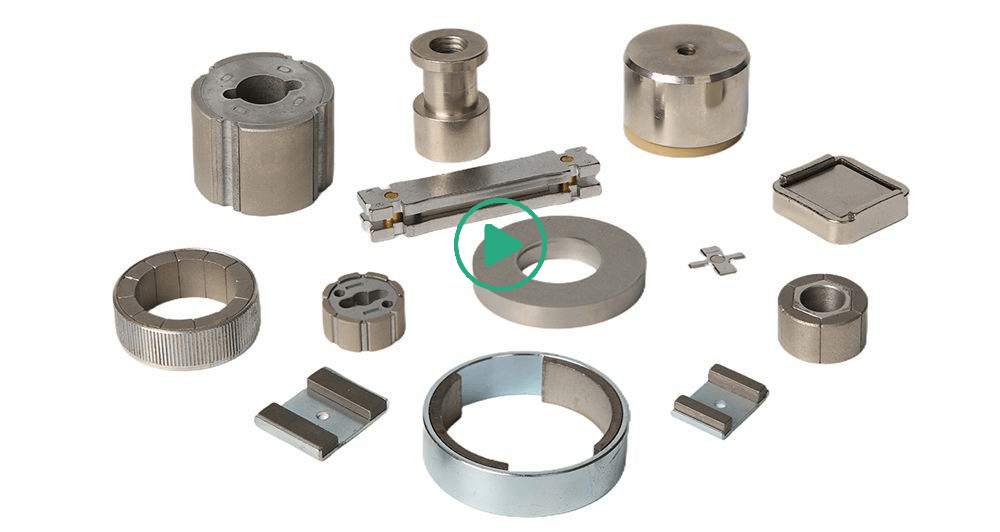
The range of SmCo magnet grade ranged from 16 MGOe to 32 MGOe. The various grades can support industrial and commercial applications with operational temperature resistance, magnetic performance, and budget balance.
There are two types of SmCo magnets with different samarium and cobalt atomic ratios: Sm₁Co₅ and Sm₂Co₁₇.

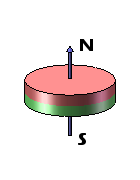
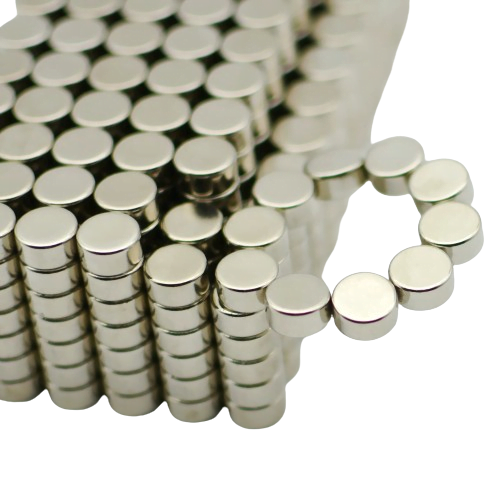
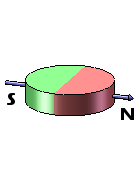
Magnetstek Engineering has been supplying rare earth magnets for over two decades. We offer competitive prices for magnets with multiple magnetizing directions. Newly introduced technology makes Magnetstek’s magnetized thickness up to 90mm, almost twice that of our competitors. Magnetizing directions refer to the orientation of the magnetic field within a magnet. The direction in which a magnet is magnetized influences its performance and application. For rare earth magnets, the magnetizing direction plays a crucial role in determining their magnetic properties.
Here are the common magnetizing directions for rare earth magnets:
Discs & Cylinders
Disc and Cylinder magnets can be axially or diametrically magnetized.

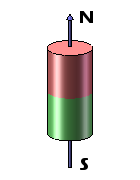

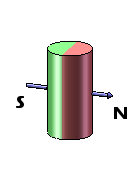
Rings&Tubes
Rings and tubes like discs and cylinders can be axially or diametrically magnetized.
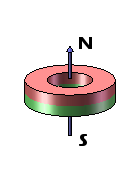
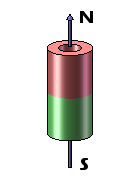
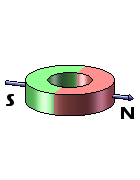
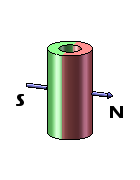
Blocks&Cubes
Block magnets are characterized by their three dimensions: length, width, and thickness. We are occasionally asked if we can provide magnetized block magnets through their length or width. The answer is yes; some long “bar” magnets are magnetized in their longest dimension.
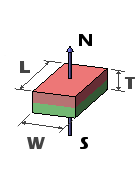
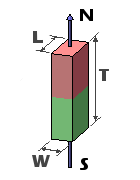
Arc Segments
Arc segments have usually been magnetized in pairs, SN-NS. So that they can be assembled to one ring on a rotor, there are two other possible magnetization directions.
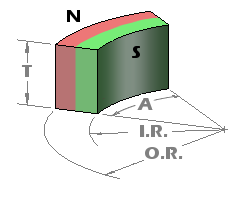
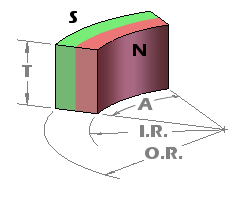
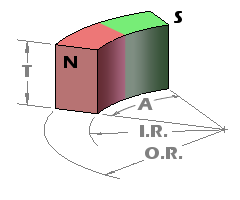

Special Magnetization
Spheres can be only axially magnetized, and mounting magnets usually have one North pole towards the outside (can be customized).
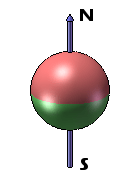
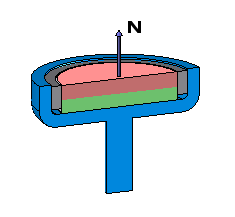
Multi-Pole Magnetization
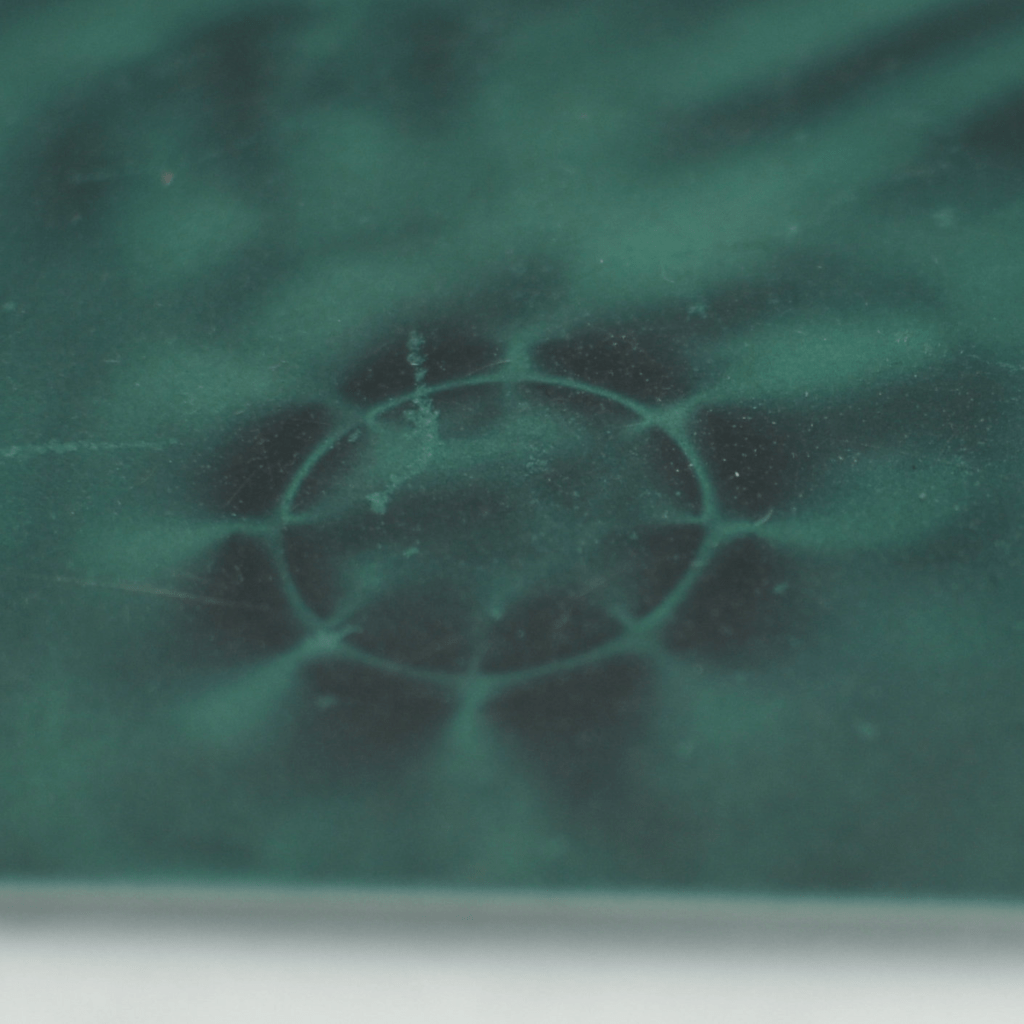
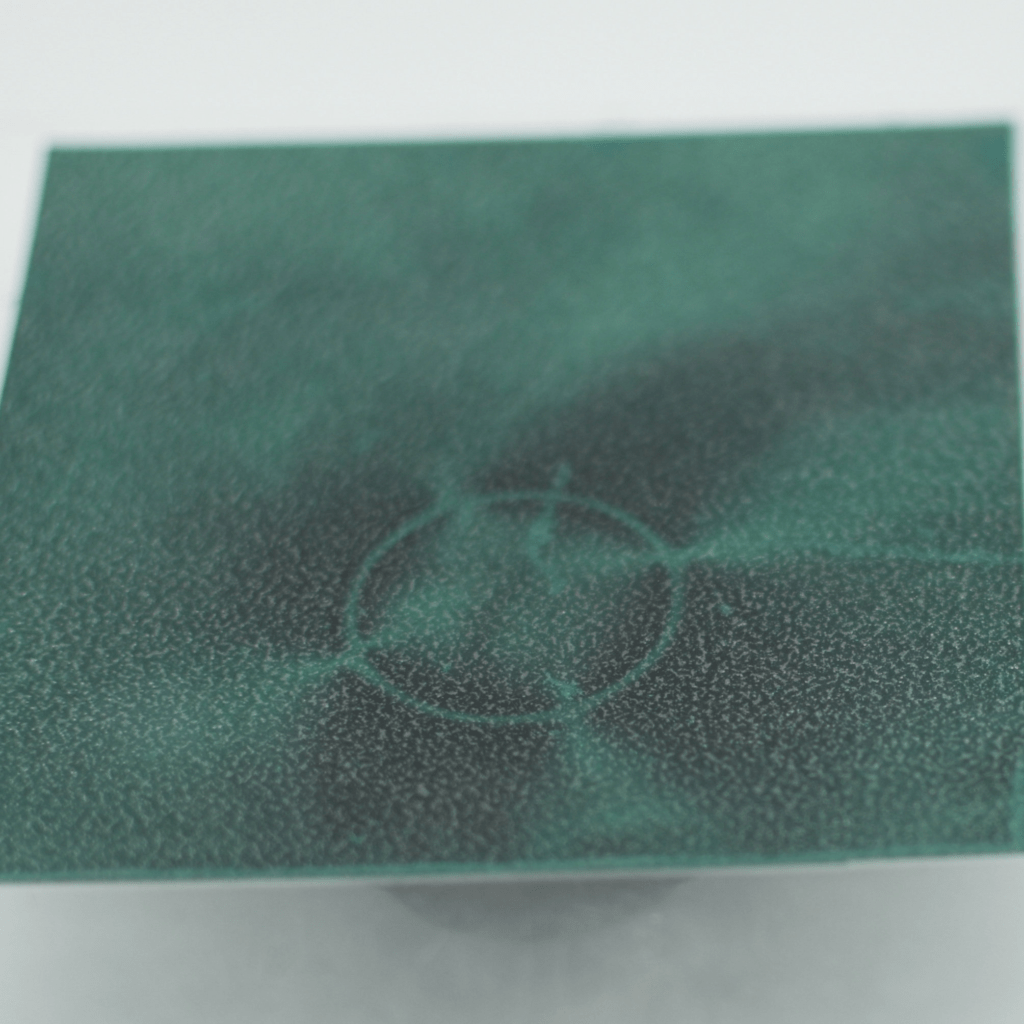
Multi-pole magnetization involves creating multiple poles on the surface of the magnet. This can be achieved by magnetizing the magnet with alternating poles along its length or diameter. Multi-pole magnetization is often used in applications requiring a specific magnetic field pattern, especially on Bonded Magnets.
Radial Magnetization
Radial magnetization is also an ordinary ring magnet, with North and South poles in a circle form on the curves.
It’s important to note that the magnetizing direction significantly affects the magnet’s performance in a specific application. When working with neodymium magnets, manufacturers carefully consider the magnetizing direction to meet the intended use requirements.
Feel free to talk to an expert for more information.
Magnetizing directions refer to the orientation of the magnetic field within a magnet. The direction in which a magnet is magnetized influences its performance and application. For neodymium magnets, the magnetizing direction plays a crucial role in determining their magnetic properties. Generally speaking, to obtain the most vital pulling force, we magnetize through thickness and make the poles on the most prominent faces of the magnet.
Generally speaking, SmCo magnets do not require any coating or plating. That is because, unlike neodymium magnets, they contain little or no iron and have excellent corrosion resistance. But when SmCo magnets are used in acidic or highly humid environments, we should still consider coatings.
Low environmental reactivity makes Samarium Cobalt (SmCo) magnets good candidates for Medical and Aerospace applications. It is always advisable to empirically evaluate the magnet alloy in the operational environment before deciding on a design path.
Typically, SmCo magnets used in medical applications will be coated with perylene and clad in an application-appropriate material.
We at Magnetstek Engineering can do the coating on SmCo magnets.
While strong rare earth magnets, such as NdFeB and SmCo magnets, are widely used for various applications due to their strong magnetic properties, it is essential to be aware of safety considerations when handling these magnets.
Here are some essential safety guidelines:

Rare earth magnets, such as neodymium and samarium cobalt magnets, are powerful, and if they come together suddenly, they can cause injuries. Be cautious of fingers or other body parts getting caught between attracting magnets.
With large magnets, severe injuries can be caused.

Rare earth magnets are not toys. Children should not be allowed to handle strong magnets. Choking small magnets or playing with large magnets are equally dangerous to children. If multiple magnets are swallowed, they can attach through intestine walls. This can cause a severe health risk, requiring immediate, emergency surgery if correctly diagnosed.

The strong magnetic fields near a neodymium or samarium cobalt magnet can affect pacemakers, ICDs, and other implanted medical devices. Therefore, you must take care to avoid inadvertently deactivating such devices.

Some people may have a nickel allergy, where an allergic reaction can cause redness and a skin rash. These people should avoid prolonged contact with nickel-coated magnets.

Strong magnets can interfere with electronic devices like credit cards, magnetic I.D. cards, VCRs, cassette tapes, floppy disks, and hard drives. Keep strong magnets away from these devices to prevent potential damage.

Magnetic fields can influence compasses or magnetometers used in air transport. They can also affect the internal compasses of smartphones and GPS devices. IATA (International Air Transport Association) and US Federal rules and regulations cover shipping magnets by air and ground delivery.

Rare earth magnets are made of hard and brittle material. They are not as durable as steel, even if they look like steel. Magnets can chip, peel, crack, or shatter if they are slammed together. Eye protection should be worn when handling magnets.
Rare earth magnets can not easily be re-machined.

Rare earth magnets, especially Neodymium magnets, can become demagnetized at high temperatures. You should know the magnet grade and the maximum operating temperature. A magnet should be stored and used below the maximum temperature.

Though most magnets are coated and protected, they are still not waterproof. In humid environments or even water, neodymium magnets can rust or corrode and lose magnetic strength.
*The icons used on this page are derivative works based on icons by Freepik from www.flaticon.com, licensed by CC BY 3.0.
Handling SmCo magnets carefully is essential, as they are brittle and break easily. Additionally, precautions should be taken to avoid situations where the magnets could pose a danger, such as swallowing, as they can be hazardous if ingested.
Always keep away from pacemakers and children.
SmCo magnets find wide-ranging applications in various industries, including aerospace, defense, transportation, and communication, specifically:
MagnetsTek invests heavily in product development annually, distinguishing us from other suppliers in the industry.